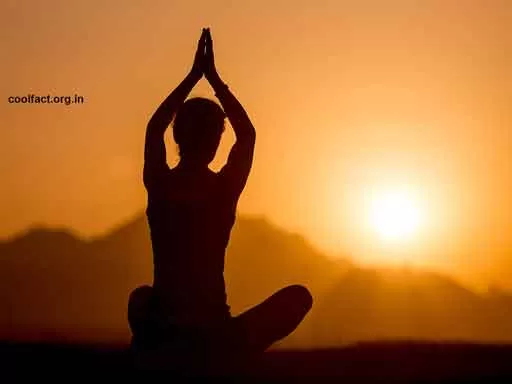Welcome to our comprehensive guide on the benefits of Surya Namaskar, also known as Sun Salutation. In this article, we will delve deep into the practice of Surya Namaskar, exploring its origins, benefits, step-by-step instructions, variations, and tips to make the most out of this invigorating yoga sequence. As experts in the field, we aim to provide you with a wealth of information that will help you unlock the full potential of Surya Namaskar and its numerous benefits.

Understanding Surya Namaskar:
Surya Namaskar is a dynamic series of yoga postures performed in a fluid sequence, traditionally practiced at sunrise to pay homage to the sun and awaken the body and mind. This ancient practice originated in India and has gained immense popularity worldwide due to its multifaceted advantages for physical, mental, and spiritual well-being.
The Benefits of Surya Namaskar
Physical Benefits:
Surya Namaskar offers a myriad of physical benefits that contribute to overall fitness and well-being. Some key advantages include:
a) Full-Body Workout:

Surya Namaskar engages various muscle groups, providing a comprehensive workout for the entire body. It helps tone and strengthen the muscles, resulting in improved flexibility and posture.
Top 5 Power of Karma Yoga in Transforming Your Business Strategies
Also Read 👆
b) Increased Flexibility:
The sequence of postures in Surya Namaskar promotes flexibility by stretching the muscles, joints, and ligaments. Regular practice can enhance your range of motion and prevent injuries.
c) Weight Management:

Surya Namaskar is an excellent addition to any weight management regimen. The dynamic movements and increased heart rate during the practice help burn calories, aiding in weight loss or maintenance.
d) Improved Digestion:
The forward and backward bending postures in Surya Namaskar massage the abdominal organs, promoting healthy digestion and alleviating digestive issues.
2. Mental and Emotional Well-being
Surya Namaskar not only benefits the physical body but also has a profound impact on mental and emotional well-being. Some notable advantages include:
a) Stress Relief:
The combination of deep breathing, mindful movements, and the rhythmic flow of Surya Namaskar has a calming effect on the mind. It helps reduce stress, anxiety and promotes mental clarity.
b) Increased Energy and Focus:
Regular practice of Surya Namaskar revitalizes the body, boosts energy levels, and enhances mental focus and concentration. It can be an effective tool to kickstart your day on a positive note.
Also Read 👆
c) Emotional Balance:
Surya Namaskar helps balance emotions by promoting a sense of inner harmony and tranquility. It can be particularly beneficial for individuals dealing with mood swings or emotional imbalances.

How to Practice Surya Namaskar
Now that we have explored the benefits of Surya Namaskar, let’s dive into a step-by-step guide on how to perform this empowering yoga sequence:
Step 1: Pranamasana (The Prayer Pose)
Stand at the front of your mat with your feet together, hands at the heart center.
Take a deep breath, center yourself, and prepare for the practice.
Step 2: Hastauttanasana (The Raised Arms Pose)
Inhale and lift your arms upward, arching backward slightly. Keep your biceps close to your ears.
Extend your spine and stretch your entire body.
Step 3: Hasta Padasana (The Hand to Foot Pose)
Exhale and bend forward, bringing your hands to the floor beside your feet. If needed, slightly bend your knees.
Aim to touch your palms to the ground and bring your head closer to your knees.
Step 4: Ashwa Sanchalanasana (The Equestrian Pose)
Inhale and step your right leg backward, placing your knee on the floor. Keep your hands firmly on the mat.
Arch your back and gaze forward, feeling a stretch in your hip flexors.
Step 5: Dandasana (The Stick Pose)
As you exhale, bring your left leg back, aligning your body in a plank position. Your arms should be straight, and your core engaged.
Maintain a straight line from your head to your heels.
Step 6: Ashtanga Namaskara (The Eight-Limbed Salutation)
Slowly lower your knees, chest, and chin to the floor, keeping your hips slightly lifted.
Your hands, chest, and chin should touch the ground, while your hips and legs remain slightly elevated.
Step 7: Bhujangasana (The Cobra Pose)
Inhale deeply and slide your chest forward, lifting your head and upper body off the ground. Keep your arms bent and close to your body.
Draw your shoulder blades back and downward, opening your heart.
Step 8: Adho Mukha Svanasana (The Downward-Facing Dog Pose)
Exhale and lift your hips up, straightening your legs and arms. Form an inverted “V” shape with your body.
Ground your heels and palms while actively pressing your chest toward your thighs.
Step 9: Ashwa Sanchalanasana (The Equestrian Pose)
Inhale and step your right foot forward between your hands. Place your left knee on the ground and look forward.
Feel the stretch in your left hip flexor and maintain a steady breath.
Step 10: Hasta Padasana (The Hand to Foot Pose)
Exhale and bring your left foot forward, aligning it with your right foot. Bend forward, bringing your head closer to your knees.
Keep your palms on the ground or grasp your ankles, depending on your flexibility.
Step 11: Hastauttanasana (The Raised Arms Pose)
Inhale and rise up, sweeping your arms out to the sides and overhead. Arch your back slightly and gaze upward.
Stretch your entire body and feel the energy flowing through you.
Step 12: Tadasana (The Mountain Pose)
Exhale and return to the starting position, standing tall with your palms at the heart center.
Take a moment to reflect on the practice and feel the grounding energy within you.
Variations and Tips for Surya Namaskar
While the traditional Surya Namaskar sequence described above is widely practiced, there are variations that cater to different needs and skill levels. Here are a few notable variations to explore:
Surya Namaskar for Beginners: If you’re new to yoga or Surya Namaskar, start with a modified version by incorporating simpler postures and reducing the intensity. Gradually increase the number of repetitions as you build strength and familiarity.
Powerful Surya Namaskar: For a more vigorous practice, amplify the intensity by incorporating challenging asanas such as Chaturanga Dandasana (Four-Limbed Staff Pose) and Urdhva Mukha Svanasana (Upward-Facing Dog Pose). This variation is ideal for those seeking a cardiovascular workout.
Slow Flow Surya Namaskar: Emphasizing the meditative aspect, this variation involves performing each posture slowly and mindfully. Focus on breath awareness and the sensations in your body, allowing for deeper relaxation and connection.
Conclusion
Surya Namaskar is a transformative practice that offers a multitude of benefits for the body, mind, and spirit. From enhancing physical strength and flexibility to promoting mental clarity and emotional balance, the regular practice of Surya Namaskar can truly unlock your well-being potential. Best Surya Namaskar or Sun Salutation is a sequence of 12 powerful yoga poses
Remember, consistency is key. Dedicate a few minutes each day to perform Surya Namaskar, and witness the positive changes it brings to your life. Whether you’re a beginner or an experienced yogi, this comprehensive guide has equipped you with the knowledge to embark on a fulfilling Surya Namaskar journey.
